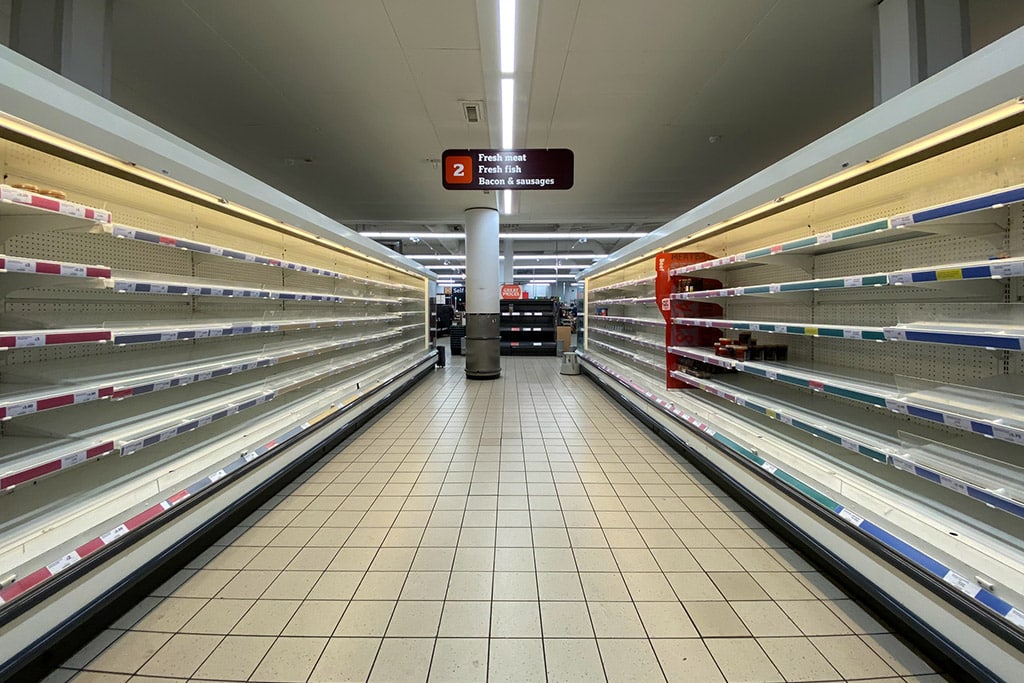
Dealing with COVID-19 as an illness poses a challenge to every nation but the challenges faced by developing and emerging economies (emerging market and developing economies, EMDEs) are different. Healthcare is limited: whist developed markets spend, on average 14% of GDP on health in emerging markets, expenditure is just 5-6% of GDP which on a per capita basis means that emerging market spending is just 5% of that in developed nations.
With the informal sector accounting for 70% of total employment in EMDEs poverty, lack of access to sanitation and overcrowding is widespread. Early on the UN estimated 3.3 million deaths in Africa assuming there were no interventions, but things so far have turned out differently in sub-Saharan Africa. Part of this is due to the younger demographic. In sub-Saharan Africa, for example, 3% of the population is 65 years or older, with 43% under 15 years old. Whilst the first phased has been managed relatively well the bigger test is yet to come.
The economic impact on developing and emerging economies will far exceed that of the global financial crisis. These economies have been buffeted by an array of shocks which have compounded the effects of domestic containment measures. The global slump has caused a sharp fall in commodity prices: there was a 20.4% drop in the prices of commodities exported by developing countries between February and March 2020. That is the largest drop on record. Developing countries will lose $800 billion of export revenue in 2020. To top onto this there has been a huge decline in remittances. Tourism-dependent and oil exporting countries are particularly hard hit.
Unsurprisingly, the IMF’s October World Economic Outlook Update forecasts emerging market economies to shrink by 3.3% this year: the largest drop for this group of economies on record. The depth and persistence of this global economic contraction is unknown will be but the bank expects a return to growth in 2021, at 5.2% globally and at 6.0% in emerging and developing economies. This means that output is quite likely not to recover to 2019 levels before 2022 in emerging and developing countries. This economic forecast of weak future growth only further harms economies by discouraging investment. There are, however, some exceptions to this picture with, for example, some emerging Asian economies performing better.
This economic situation is likely to force countries into default. Before the pandemic roughly one third of all emerging market economies had high-debt levels and had little space for undertaking additional discretionary fiscal policy. In emerging market economies fiscal deficits are projected to widen sharply to 10.5% of GDP on average in 2020, more than double the level last year. Government debt is projected to average 63% of GDP in 2020, continuing its upward trend with a 10 percentage point surge from last year. Emerging markets and developing countries have about $11 trillion in external debt and about $3.9 trillion in debt service due in 2020. Debt threatens to create a global development emergency in the same way that the pandemic is creating a global health emergency. As this crisis develops there is a high risk of insolvency which is not helped by the alarmingly high risks of corporate default. In light of the emerging dilemma of debt there has been an initiative to condone interest payments on debt for developing countries for 2020. IMF credit lines will also come in handy for countries requiring extra support, but the IMF may have to increase these credit lines. Colombia, for example, has already asked for an increase.
The high levels of public debt and additional pressures induced by the pandemic in emerging and developing countries the crisis threatens severe underfunding of important health and welfare programmes. Many may die of illnesses unrelated to this pandemic with scare government resources having to be channelled into testing and treating of COVID-19 neglecting tuberculosis, malaria and AIDs amongst others. 40 million children missed their polio vaccination in Pakistan. Long term this is very concerning. No doubt the cuts in funding will hit services that girls and women depend on.
1.5 billion children have been out of education, 80% of all children. This is the greatest education emergency of our lifetime and the education of many children may be permanently damaged. The online infrastructure that is available in the developed world which has allowed at least some students to learn virtually is not an option in many EMDEs. Many of these children may never return to education.
COVID-19 is predicted to plunge 420 million people into extreme poverty and risk reversing three decades worth of improving living standards). This will be a significant setback to the prospects of seeking the UN’s 2030 Sustainable Development Goals. Lockdown measures caused immediate economic affect with millions of jobs and livelihoods disappearing. The hit has particularly effected low-skilled workers who cannot work from home. Of the approximately 2 billion informally employed workers worldwide, the International Labour Organisation estimates close to 80% have been significantly affected. Government attempts to help it were no match for scale of the challenge. Per capita incomes are projected to contract deeply as a result, causing the first net rise in global poverty in more than 20 years. The UN has warned of an impending global food emergency with an increase of 130 million more people suffering from crisis levels of hunger.
The current global economic context only exacerbates this with the reduction and withdrawal of foreign direct investment which promotes development. Commodity-rich exporting countries will face a $2 trillion to $3 trillion drop in investment from overseas in the next two years. Already in March and April there has been a capital outflows of an estimated $100 billion from emerging and developing countries. External private finance inflows to developing economies could drop by USD 700 billion in 2020 compared to 2019 levels, exceeding the immediate impact of the 2008 Global Financial Crisis by 60%.
However grave the current crisis in Spain or other parts of Western Europe may be our challenges pale into insignificance alongside those of developing and emerging countries. Yet, it must also be noted that not all developing countries are affected in the same way. Whilst some countries have responded impressively for example in the case of Rwanda that has used drones and robots as part of its response and impressively scaled up testing. On the other end of the spectrum are countries like Yemen, the Democratic Republic of the Congo and South Sudan that were already wracked by conflict who now face the spectre of famine.

